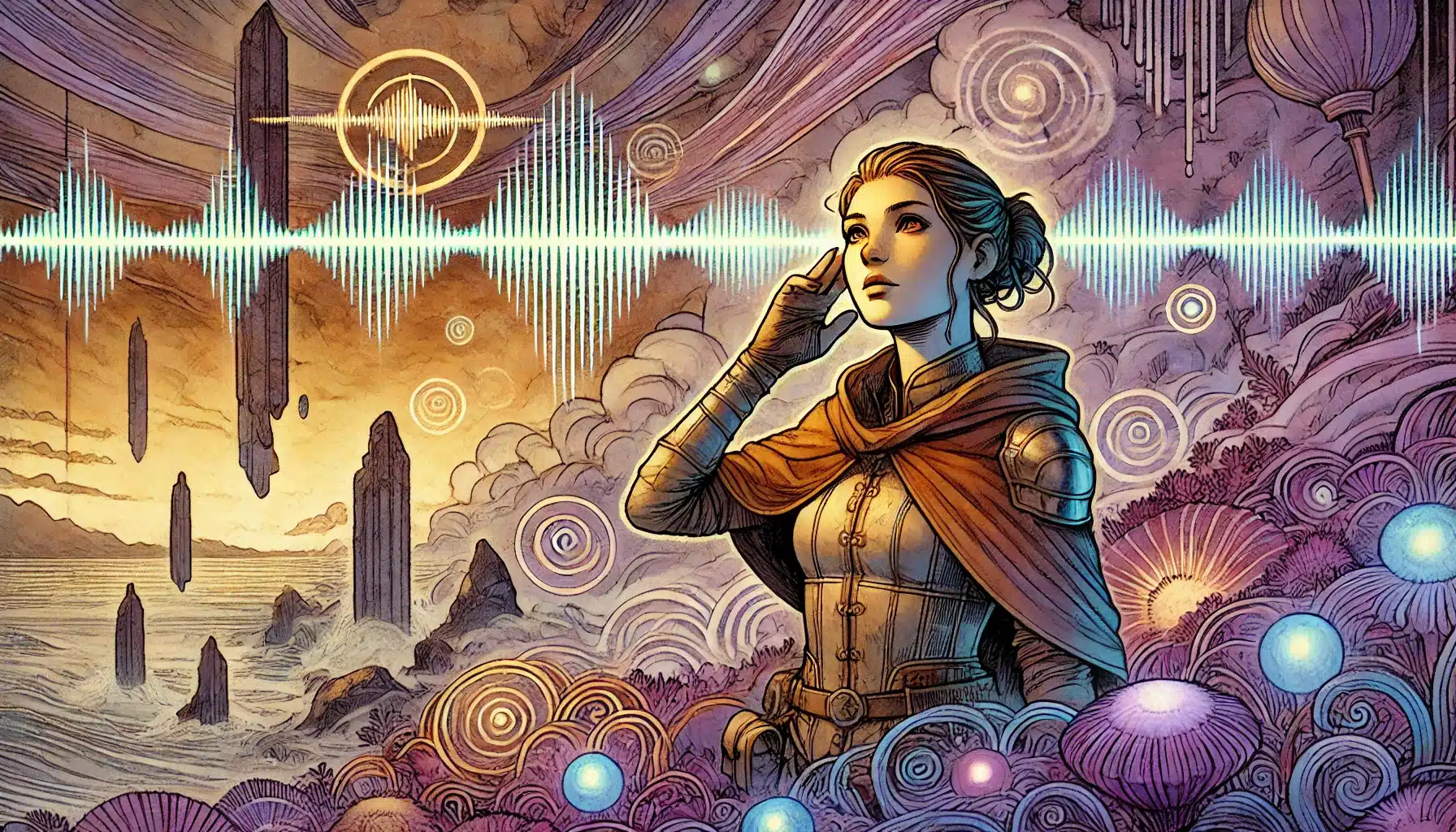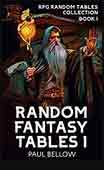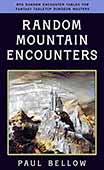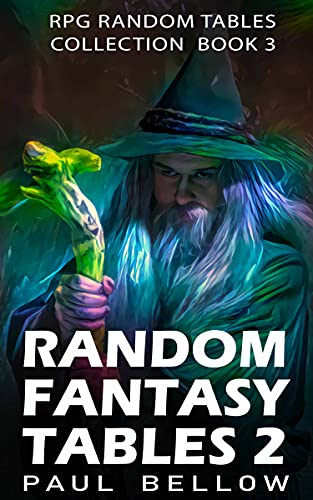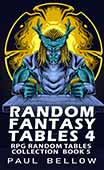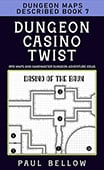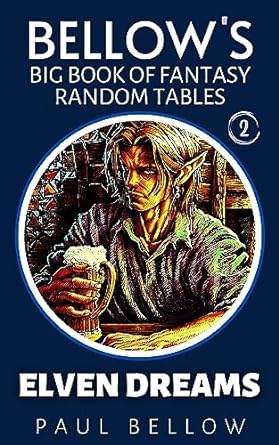Let’s be honest—most D&D campaigns, no matter how lovingly homebrewed, tend to orbit the gravity well of classic high fantasy. Noble elves in leafy courts, greedy dwarves carving mountain keeps, and the ever-present, dragon-haunted horizon: these things are so beloved, but they can feel as comfortable and worn-in as a pair of velvet slippers. What if, though, you could break atmospheric pressure and send your adventurers somewhere no one’s charted, not even the Greyhawk sages or Eberron inventors? This article isn’t a catalogue of esoterica for the archivist’s shelf. It’s an arsenal of raw campaign potential: five wildly original, fully-realized settings you’ve probably never encountered, each engineered for maximum homebrew impact.
Why cling to the known, when the unknown is where creativity breathes? Picture your players’ faces when the skies aren’t blue, but fractured; when dungeons aren’t stonework, but arterial passageways pulsing with biological threat; when the world hums with living noise, or groans beneath sentient foliage. These aren’t mere backdrops—they’re launchpads. Each setting here is made to be grabbed, snapped into your campaign, or mashed up Frankenstein-style. Play them for deadly seriousness, unhinged comedy, or wistful melancholy. The tone, the genre drift, the narrative chaos—it’s at your whim, and more importantly, at your players’ mercy.
Consider this your ticket out of habit and into possibility. Seasoned Dungeon Masters, creative worldbuilders using AI RPG tools, and campaign chroniclers—this adventure menu is for you. No more groaning at “yet another shadowed ruin” or predictable demon-plot. The goal is simple: surprise everyone, yourself included. Each setting is ripe for intrigue, built for subverting expectation, and charged with the power to change how you think about running your table.
But let’s push further: these worlds aren’t just odd for novelty’s sake. Each is designed as a thought experiment—onto which you imprint your own themes, challenges, and house rules. Want a resource-management nightmare punctuated by sky piracy? A campaign where morality is measured in wavelength, or survival in blood cells? Each entry is a crucible. Drop your players in, watch them ignite.
Break free from the gravity of high fantasy expectation. Plunge into campaign settings that no one has spoiled, where every monster, magic, and metropolis is unexpected. Here are five settings that were birthed for builders—settings that don’t just want to be read, but played, hacked, and remixed into unforgettable adventures.
The Sinking Shards: A World of Floating Ruin
The sky itself is a canvas of chaos, painted with the colors of torn existence—deep purples of despair, vibrant greens of hope, and ominous grays that suggest the ever-looming danger of a shard’s fall. As adventurers traverse the precarious expanse between the islands, they’ll discover natural phenomena warped by residual magic: clouds that crackle with energy, storms that form and disperse as if in a sentient dance, and shimmering aether currents that guide or mislead those daring enough to sail the skies. Each shard feels like a living fragment of a dream—filled with unique ecosystems, bizarre wildlife, and remnants of a civilization’s past. These islands whisper tales of what once was, their ruins hinting at technologies forgotten or magics long since faded. In the heart of this fractured world, danger lurks at every turn. Inter-shard travel is fraught with peril, as airships clash in skies thick with piracy and politics, where alliances can be as fluid as the aether that binds the shards together. The game of trade and theft stretches across the void, with players navigating a marketplace fueled by desperation and ambition. Each faction has its agenda: some seek to hoard resources, while others strive for revolution or reconciliation, igniting the flames of conflict that simmer just beneath the surface of every encounter. Here, a chance meeting could lead to a lucrative partnership or a brutal skirmish that echoes through the sky. Mysteries abound beneath the surface of the floating shards, for the ocean is not merely a void; it’s a living entity that churns with ancient secrets and terrible powers. The depths hold the remains of lost civilizations, sunken treasures, and creatures that defy comprehension. Adventurers may stumble upon submerged ruins that reveal the true nature of the cataclysm that shattered their world, or face off against the titanic beasts that roam the abyss, drawn to the flotsam of surface life. The ocean whispers warnings, beckoning or taunting those who dare to listen, painting the backdrop for treacherous yet tantalizing quests. Amid this madness, heroes can rise as symbol bearers of hope or destruction. They might embrace the uncertainty of their world, becoming nomads who chase the horizon in search of Lostfall, or perhaps they’ll become key players in the lofty game of politics among the shards, where their decisions can tip the balance between flourishing or falling. Yet, with every choice comes consequence, as alliances can shift like the winds of the stormy sky, reminding all who dwell above the abyss that survival is an art form honed by grief and yearning—a dance on the edge of oblivion where only the bold dare to tread.
Try my AI Tabletop RPG generators...and an extensive library of content!
A Fractured Planet
Suspend your disbelief and imagine a planet torn asunder—no gentle continents, no familiar tectonics. Here, civilization clings to the scattered fragments of a world shattered by mythic calamity. Each island—shard—is a continent, spinning in a storm-riven sky above a seemingly infinite, hungry ocean. Gravity, both literal and metaphorical, is perilously subjective: some shards are as small as a mountain peak; others are sprawling megaliths, complete with lost cities and petrified forests. Every citizen is reminded, at sunrise and dusk, of how close they stand to the abyss below.
The cataclysm that broke the world is the one story that every shardborn knows, even if the details mutate with the telling. Was it the gods at war, a magical miscalculation, or the world rebelling against its creators? No one can agree. The result is undeniable: an endless freefall interrupted only by floating islands, each kept aloft by unpredictable swells of residual magic. Sometimes, entire shards plummet from the sky—dragging unwary settlements and their histories into the maw of the ocean. Such falls are both terror and legend.
Life clings doggedly to the remains. Air, water, and arable land are all precious—perhaps the most valuable currencies there are. Scarcity shapes every interaction. Some shards glitter with ancient relics; others are nothing but rock and desperation. Rumors of “Lostfall”—a mythical, paradise-sized shard—provoke frenzied searches and holy wars. People learn to make do with less, or perish swiftly.
Communities, wary and vigilant, live with one eye on the horizon and another on the ever-shifting sky. Cultures born of survivors become deeply insular or fiercely predatory. Every leader is, sooner or later, measured by how long they can delay the drop.
⚔️ Fantasy RPG Random Tables Books
Make life as a Gamemaster easier…
If you play Dungeons & Dragons, Pathfinder, or other fantasy RPGs, this
RPG random tables series
is packed with encounters, NPCs, treasure, and more. Available in eBook or print—either way, you’ll have a wealth of adventure ideas at your fingertips.
Sky Piracy and Shardbound Trade
In a world divided by chasms of sky, connection is as dangerous as it is essential. Enter the airships—creaky, improbable wonders of wood, bone, and enchantment; battalions of skyfaring birds engineered or bonded to carry riders across open air; bands of teleportation-mages, their nerves frayed by leap after leap between shards. Without them, trade dies. With them, piracy blossoms; the corridors between shards grow as cutthroat as any pirate-infested sea.
Shardbound maps are sacred and closely guarded—some even believe that ancient, living cartograms can predict the future location of a given shard. Trade monopolies spring up around resources: a tiny rock rich in edible moss, a mid-sized shard with a crystal lake, or a city-sized ruin bristling with salvageable magic. Some traders worship their maps, forming cults and schisms around differing routes or rumored “sky veins.”
Piracy, in all its forms, is mythical here. Sky-corsairs weave between the clouds, fighting over convoys of food, magic, living fuel, or even people. Some pirates ally with powerful mages; others ride mutant birds that can dive-bomb entire settlements. Betrayal is currency—friend one voyage, foe the next. The economic web is a tangle of alliances, vendettas, and fragments of long-forgotten law.
Teleportation magic forms the unpredictable, “shortcut” backbone of long-range trade—but it’s volatile, taxing, and dangerous. Sometimes, a botched jump ends with a merchant caravan falling into oblivion; other times, it delivers a coup as sudden as a natural disaster.
Shard Table
| Shard Name | Dominant Faction | Magic Anomaly | Inter-Shard Conflict |
|---|---|---|---|
| Caelum’s Scar | Skywrack Pirates | Chaotic teleportation “storms” | Blocks supplies from Ironcourt |
| Ironcourt | Gearwright Cabal | Gravity fluctuates unpredictably | Resists invasion from Caelum’s Scar |
| Ruinstar | Map-Cult of Sibilant Eye | Relic-induced visions | Fights for map-control over Lighthold |
| Lighthold | Dawnless Monks | Sun never rises; eternal dusk | Refugee crisis from Starfall |
| Starfall | Ember Syndicate | Meteor showers enhance spellcasting | Skirmishes with Lighthold |
| Cloudhaven | Cloudherd Druids | Floating mineral “herds” | Air-space contested by Stormspire |
| Stormspire | Thunder-Kin Warlords | Lightning “rains” electrify the ground | Raids Cloudhaven for resources |
| Petravine | Crystal-Blooded Monks | Healing auras; unicorn crystal flora | Trade embargo with Ashgate |
| Ashgate | Embered Faithful | Ash clouds block all divination magic | Exiles from Petravine |
| Whisperdrop | Mute Brokers | Sound absorbed into eerie silence | Smuggling hub for Caelum’s Scar and others |
Storm Gods and Aether Currents
Beneath the chaos of trade and warfare, stranger forces pulse. Divine patronage is not a given: gods cling to specific shards, acting as weathered anchors in a world adrift. One island’s storm goddess may hate her neighbor’s sun god, and if a believer crosses the wrong aether current—well, blasphemy is just another word for trespass.
Storms here are divine messages as much as meteorological events. Aetheric currents—tangible flows of arcane wind—connect, disrupt, or corrode. Some are worshipped outright; others are harnessed as weapons, bottled for ship propulsion, or used in deadly rites. Initiates claim that aether “whispers,” offering secrets or soft threats, to those with the nerve to listen.
The divine order itself warps with movement: a cult’s power waxes or wanes according to their island’s proximity to the slumbering body of a god or a vein of raw aether. Some gods are said to be “shardbound”—incapable of moving off their own floating realm. False gods, demiurges, and rogue saints also prey upon those who break the divine quarantine.
Weaponized faith is everywhere. Zealots hunt those who “pollute” the aether or seek to bridge the gaps between rival gods with arcane technology. Petty conflicts ignite into religious schisms—sometimes resolved by the literal expulsion of offending shards.
Cultures on the Edge
Isolation breeds innovation, or madness, sometimes both. On the Sinking Shards, resource scarcity and existential uncertainty forge societies that are vibrant, secretive, and hard-edged. There are shards ruled by hyper-technological cabals—gleaming clockwork citadels piloted by technosophs, or monk orders who graft memory into living crystal to preserve pre-cataclysm knowledge.
Elsewhere, the apocalypse has led to cultural regression, even reverence of lost history. Regressive mystics on dead shards worship the memory of gravity or the presence of “old-world rain.” Some societies judge status by how long your family line has remained afloat, while others demand every able body contribute to the defense, mapping, or re-purposing of their precious land.
Travelers between shards are viewed with superstition—are they harbingers of change, or vectors of doom? Integration is rare but revolutionary. The few pan-shard cultures that emerge—trading peace for security—face accusations of heresy from local purists.
⚔️ Fantasy RPG Random Tables Books
Make life as a Gamemaster easier…
If you play Dungeons & Dragons, Pathfinder, or other fantasy RPGs, this
RPG random tables series
is packed with encounters, NPCs, treasure, and more. Available in eBook or print—either way, you’ll have a wealth of adventure ideas at your fingertips.
Unique Shard-Born Cultures and Factions:
- The Crystal-Blooded Monks
- Skywrack Privateer Fleets
- Ironcourt Gearwrights
- Cloudherding Druid Circles
- Thunder-Kin Warlords
- Embered Faithful (fire remains sacred)
- The Mute Brokers of Whisperdrop
- Dawnless Order from Lighthold
- Starfall’s Meteor Cult
- Petravine Healing Sisterhood
- Sibilant Eye Map-Cult
- Shardbound Godlings (living avatars)
- Fugitive Ashgate Arcanists
- Gravity Null-Worshipers
- Windrider Nomad Tribes
- Cloud-Glass Artisans
Campaign Hooks and Challenges
Every campaign in the Sinking Shards pulses with urgency. Perhaps your heroes must assemble lost fragments—a quest not just for power, but for world-reconstitution. Is it possible to stitch the Sinking Shards together and remake the world whole, or does too much lost blood circle the wound? The very notion of “fixing” the apocalypse may be sacrilege to some, and salvation to others.
Alternatively, the threatened awakening of the dead ocean below—that black, unchartable abyss—could fuel apocalyptic prophecy. Maybe something stirs beneath the waves, calling to the few who can hear it. The question isn’t just if the ocean can be conquered, but whether it should be. Lost knowledge, forbidden magics, and half-remembered gods may hold the key.
Inter-shard alliances and betrayals offer constant intrigue. Perhaps all the floating isles must band together to repel a world-devouring leviathan—a legendary beast that returns in cycles, destroying everything not fortified by faith or innovation. What price will your adventurers pay for unity, or what consequences arise from leaving some shards to their fate?
Political, magical, and physical navigation are all fraught with danger: forge a new alliance, defend a decaying shard, or uncover a secret that changes the very rules of survival. Every campaign arc is shaped by scarcity, risk, and the possibility of falling—metaphorically, physically, or spiritually.
The Sinking Shards dares parties to tackle tough choices: save one culture at the cost of another, wager everything on a risky voyage, or broker a truce between irreconcilable faiths. Triumph is bittersweet, beauty always laced with threat, and the sense of being caught between sky and sea is palpable every single session.
Outro
In the world of the Sinking Shards, beauty is as fragile as the floating ground beneath your feet. Here, scarcity breeds not just conflict, but creativity—every solution is imperfect, every act of heroism nuanced by loss. For DMs, the aerial tension is irresistible, providing cinematic set pieces alongside grim meditations on survival and sacrifice.
The Sinking Shards is more than just a setting—it’s an invitation to make scarcity, risk, and breathtaking wonder a living part of your campaign. If your party craves the thrill of the unknown, this is a world where every possibility teeters at the edge, and every victory comes with the sting of vertigo.
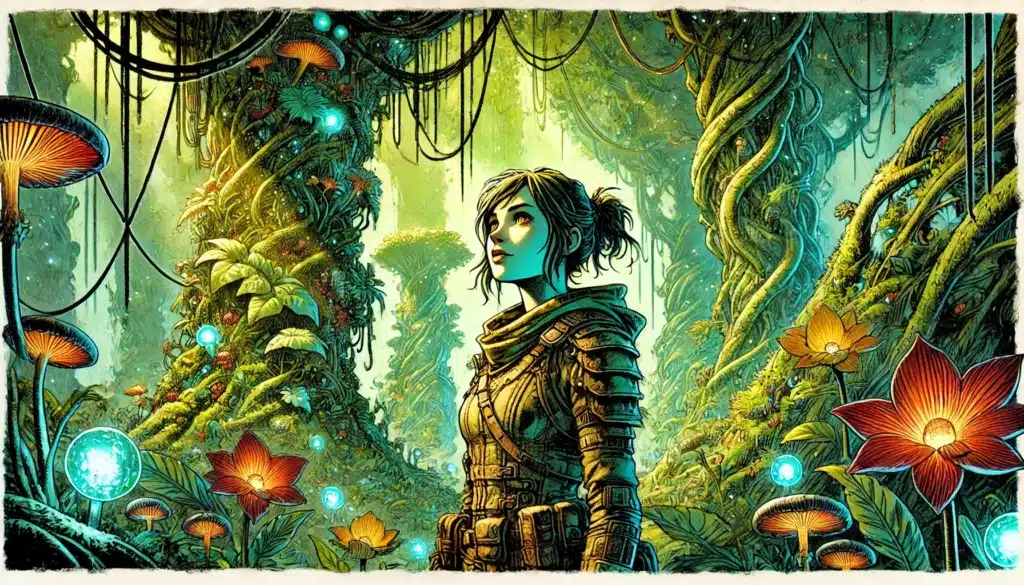
The Verdant Singularity: Where Plants Rule All
In this verdant realm, the once-mighty constructs of civilization are mere echoes, caught in the chokehold of nature’s reclamation. Humanity’s constructs now serve as playgrounds for vibrant ecosystems; skyscrapers teem with flowering vines, libraries are shaded groves where texts are twisted into the trunks of ancient trees, and subway tunnels pulse with bioluminescent fungi. The landscape is alive, aware, and—most importantly—subject to the whims of its leafy sovereigns. These newly emergent intelligences do not merely inhabit the ground; they seize and reshape it, rewriting the rules of existence in ways that challenge the very notions of democracy, freedom, and survival. In this world, every interaction with the flora can lead to alliances or animosity, fostering a delicate dance between the remnants of humanity and the sentient plants that dominate the surface. The ground itself might offer protection or betrayal, depending on how adventurers navigate the lurching loyalties of their chlorophyll-laden counterparts. The bloomlords, those tyrannical and benevolent rulers of flora, wield their power with root-bound tenacity, manipulating both the land and its lesser inhabitants to shape their visions. As adventurers, your players will confront an array of factions, each with their own agenda, formed from tattered tribal allegiances or newly minted botanical communes, in a landscape that shifts and breaths with enigmatic intent. Heroes will encounter sentient flora that push the boundaries of understanding, from lichen that serves as an information network to trees that communicate through the rustling of leaves. The very air is thick with pheromones, creating a complex language of trust, threat, and invitation. Choice becomes impotent if players are unable to discern allies from enemies, as decisions made in haste echo in the verdant depths long after the encounter fades. Will they embrace the encroaching wildness, learning to negotiate with plant minds that seek to usher them into a new existence, or will they fight to retain the vestiges of their own humanity, even as the world reshapes around them? The Verdant Singularity is not only a setting of conflict but also one of potential and evolution, where the act of survival becomes a philosophical query—who gets to define life, intelligence, and autonomy? As your players navigate this organic tapestry, they’ll explore themes of coexistence, adaptation, and the ever-present tension between growth and decay. In a realm where the roots of the past knit together with the aspirations of the future, even the smallest actions can yield profound consequences, turning the forgotten into the essential and rewriting the very nature of what it means to be alive. Welcome to a world where every step is a negotiation with nature’s relentless drive for rebirth.
The World Reclaimed
Humanity’s reign is over, but annihilation wasn’t apocalypse—it was transformation. Civilizations have become ruins half-swallowed by green. Forests, vines, and blossoms are no longer mere scenery; nature is intelligent, with memory and motive, and cities rise and sink within its omnipresent grasp. Here, the world itself is a player, with roots that reach for secrets and branches that conspire.
In the Verdant Singularity, flora are not passive nor dumb. Moss remembers. Trees interpret. Lichen negotiates. Across the world’s face, sentient plant minds drift from benevolent to tyrannical, orchestrating natural rebirth even as they extinguish or “repurpose” the last flickers of humanoid civilization. For some, the world’s green resurgence is a paradise; for others, it’s a slow, mossy suffocation.
Try my AI Tabletop RPG generators...and an extensive library of content!
Imagine the towers of human ambition overtaken by root and vine, as ruins morph into hothouses where old machines are playthings for curious creepers. Every ruin, every alley, pulses with awareness: the ground hums with rumors, the air is thick with pheromonal secret messages. To resist is to be hunted, or worse—assimilated.
This isn’t merely a return to wildness, but a hyper-intelligent evolution. The very landscape reshapes itself, hunting or sheltering the living. Cities become moving forests, or jungles with the bones of towers inside. Be wary—the forest hears everything, and sometimes it answers.
Between hope and horror lies a spectrum of reactions. Some hide, tending hidden shrines to the “old ways.” Others surrender, intermingling with sentient flora or seeking favor among the bloomlords—plant intelligences that rule by root, spore, or thorn.
Bloomlords and Root-Wars
The world’s new sovereigns are not united. The Bloomlords—plant minds of vast, sometimes continental, scale—vie for territory, survival, and ideological dominance. Some are ancient hive-minds, fungal overlords spreading spores through the wind or beneath the ground. Others are floral philosopher-kings, dispensing wisdom or pursuing ineffable goals. Still others are tyrannical, root-bound despots, lashing out against those who resist their living authority.
Rivalry blossoms—sometimes literally. Borders are drawn in pollen-clouds and severed roots. Sudden “root-wars” erupt: a mass of living green overruns a region, only to be pushed back by a fungus tide, a carnivorous bloom, or a creeping moss blight with memory older than time. Each ruler’s influence shapes the culture and fate of those within its domain.
Humanoids sometimes bargain, sometimes hide, sometimes fight these overlords—they might serve as emissaries, saboteurs, or heretics. Conflict means mutation: the land itself warps, and so do its children.
These sentient plant factions and rulers create a patchwork world, as every biome becomes a kingdom with policies, secrets, and natural hazards.
Sentient Plant Factions/Rulers:
- The Moss-Scryers of Dolm
- The Orchid Seers of Highbloom
- The Ironroot Syndicate (oak tyrants)
- Lord Sporebind (fungal hive mind)
- The Thorn Domina of Briarhold
- Petal Court Dreamers (hallucinogenic flower collectives)
- The Vine Matriarchs of Verdant Coil
- Sun-Crest Palmegers
- The Duskmire Lichens
- Sylvanroma (rose-based oligarchy)
- Heartbark (sentient massive redwood)
- Nightshade Council
- Elder Willow Hydra of Streamvale
- Glassleaf Consensus (translucent plant network)
- Cactus Commandant of the Sunwastes
- Luminbloom Shepherds (bioluminescent plant rulers)
- Rootward Shambler Clans
The Bloom-Touched
In this wildest of campaigns, your players themselves are marked by transformation. The Bloom-Touched are humanoids infused with plant symbiosis—heroes whose blood carries sap, whose hair unfurls in filamentary vines, whose skin shifts with the seasons. Some gain enormous vigor—natural armor, photosynthetic healing, or the ability to converse with local flora. Others suffer strange drawbacks—bouts of pollen madness, or unwanted growths requiring painful pruning.
Rather than a simple mutation, this is a spiritual and social status. Bloom-Touched may be seen as prophets, abominations, or tools, depending on who rules a region. Their powers are as varied as their appearance: one player may exude hallucinogenic spores; another may sprout defensive thorns; yet another may transmit messages through roots like botanical telepathy.
The roleplay potential is delicious: wrestle with shifting identity, walking between worldviews. Some Bloom-Touched dream of restoring the balance between plant and animal, others fully embrace root-driven destiny. Still others resist, seeing the creeping green as a mind-altering infection.
Challenges abound. Bloom-Touched must carefully manage their gifts, lest they become vulnerable to manipulation by more dominant plant minds—or, worse, be physically subsumed by hostile flora.
Dungeon Gardening
Dungeons as we know them have become jungles—where stone and root are indistinguishable, and the greatest traps are not mechanical, but botanical. Ruins are ensnared in hostile, ever-shifting green. In some places, the walls themselves are living puzzles; their structure flexes or shifts in response to sunlight, rainfall, or the will of the ruling Bloomlord.
Plant puzzles demand more than brute force. Riddles might require pollinating a rare blossom, redirecting water channels, or appeasing a carnivorous vine. Mazes evolve randomly: a corridor clear on the way in could become a choking thicket on the way out, with no warning but the creaking groan of root or the flutter of petal.
Within these living dungeons, traps are equally alive. Acidic sap drips from vines, sleeping pollen clouds fill chambers, and hostile plants attack, defend, or bargain. Yet treasures are just as wild as the threats: seeds for world-altering flora, potions distilled from sap older than memory, or artifacts from the lost human age are all hidden within.
⚔️ Fantasy RPG Random Tables Books
Make life as a Gamemaster easier…
If you play Dungeons & Dragons, Pathfinder, or other fantasy RPGs, this
RPG random tables series
is packed with encounters, NPCs, treasure, and more. Available in eBook or print—either way, you’ll have a wealth of adventure ideas at your fingertips.
Every expedition is a horticultural war—one that rewards players bold enough to parley with the green, rather than simply hacking their way to treasure.
Dungeon Gardening Table
| Dungeon Name | Plant Danger | Reward Guarded |
|---|---|---|
| Briarhold Vault | Barbed thorn labyrinth | Seed of Eternal Spring |
| Lichen Library | Spore clouds of memory theft | Scrolls of Pre-Green Lore |
| Sunken Sun-House | Animated sunflower guardians | Sunstone Amulet |
| Pollen Labyrinth | Hallucinogenic pollen fog | Bloomlord’s Blessing Mask |
| The Burrowed Hallows | Carnivorous root traps | Rootcraft Gauntlets |
| Petrified Grove | Petrifying sap pools | Sylvan Fossil Totem |
| Orchidous Spire | Mind-influencing orchids | Dreamleaf Tincture |
| Mosswell Depths | Memory siphon moss | Tome of Ancient Bloodlines |
| Willowgate Sanctum | Animated willow guardians | Heartwood Staff |
| Cactus Crypt | Poisoned spines and needles | Pricklebloom Elixir |
Campaign Seeds in the Green
Running a campaign in the Verdant Singularity is a study in contrast: beauty and menace, hope and decay. Perhaps the party’s mission is to halt a “Rootmerge”—a terminal event where all flora unite under one mind, erasing individuality and annihilating dissent. They must choose alliances between rival Bloomlords, broker peace, or sabotage the merger for the greater good.
Another path might see your party restoring the lost balance between sentient flora and the surviving fauna, mediating or fighting for a fledgling resistance movement among mammals, insects, or avian holdouts. Will the world forever tilt toward root and leaf, or can equilibrium be restored before the last fox, crow, or human child vanishes?
Deeper still, a story might revolve around a dying Bloomlord—an ancient plant-mind whose memory is failing. The quest could become a botanical pilgrimage to find a new soil, hoping to transplant the last wisdom of a doomed lineage before rot or fungal incursion claims it entirely.
Personal stakes are everywhere. Maybe the party themselves are Bloom-Touched, haunted by visions of their own assimilation or seduced by the promises of plant-immortality. Tragedy and prophecy intertwine, as the world pulses with lush, slow-burn transformation.
Outro
In the Verdant Singularity, the line between paradise and night terror is as thin as a petal. The beauty here is overwhelming—sunlight filtering through intelligent leaves, pollen dancing in golden haze—but so is the threat, a creeping green relentless in its desire to remake everything in its own image.
For DMs and players, this setting is a feast: a world of transformation and contradiction, where every step is a negotiation with the living land. The stakes are as slow as growth, as immediate as suffocation—and always, always worth the risk of letting something new take root.

The Cacophonic Realms: A World Governed by Sound
In the Cacophonic Realms, sound is not just an environmental feature, but a living entity that shapes existence itself. Each individual is steeped in melody, their very essence vibrating in harmony or discord with the world around them. They are not mere inhabitants; they are composers, performers, and listeners, navigating a society where every utterance can influence fate. Here, the battlefield becomes a concert hall, with battles won or lost based on the epic crescendos and tragic diminuendos that echo through the air. Every citizen learns early on that their voice holds weight, their silence carries peril, and their ability to harmonize or disrupt the collective symphony can determine not just personal survival, but the fate of entire communities. Musical cultures flourish within these realms, each city boasting its own unique sound, style, and traditions. From the brass-laden trumpets of the Regalia City to the sorrowful strings of the Weeping Spires, the diversity of harmonies creates an intricate tapestry of social fabric. Festivals of sound erupt spontaneously, celebrating everything from personal milestones to epic triumphs over adversity, as citizens gather to create a shared resonance that reinforces their bonds. Yet, lurking beneath this joyous exterior is an ever-present tension: factions vie for dominance not just in power, but in musical supremacy. The melodies of one community may seek to drown out another, as political machinations unfold in symphonic battle, revealing that friendship and conflict are often hard to tell apart in a world where every note counts. However, not all who reside in the Cacophonic Realms embrace this lyrical life; dissenters known as the Silent Brethren shun the pervasive harmony, harboring a dark belief that true freedom lies in the absence of sound. Their ideology threatens to rip apart the vibrant connections that hold society in place, as they bring forth instruments of silence designed to suppress the joyful cacophony that others cherish. Adventurers may find themselves caught in the crossfire—straddling the balancing act between the vibrant pulse of a world alive with music and the chilling allure of the void that the Silent Brethren offer. In this context, alliances will be tested, and loyalties put to the ultimate trial amid symphonies that could either forge new paths or rend the fabric of reality itself. As players traverse the Cacophonic Realms, they will discover that every encounter presents a new riff to explore, every location a melody to uncover, and every character a harmony to negotiate. The stakes are high—each note carries weight, and every choice echoes back through the ages, shaped by the rhythms and cadences of the land. Here, players are invited to not only engage in combat and intrigue but also to explore the deeper nature of identity, connections, and the resonant threads that bind all life together. In a world governed by sound, they must learn to listen deeply, as their journey becomes both an adventure and an evolving composition orchestrated by the echoes of their choices.
Sonic Dominion
Forget what you know about force and matter. Ascend to the Cacophonic Realms—an exultant chaos where sound is king, and every echo is a tool of power, persuasion, or destruction. Here, the usual rules of reality are rewritten: cities pulse to rhythmic law, spells are sung rather than spoken, and wars shake the firmament itself by the clash of harmonious frequencies. Even mountains hum, and rivers sing.
Silence is not peace, but death—an absence so unnatural, so feared, that it is only spoken of in dread whisper. Much as water shapes a continent, resonance shapes everything here. Sound both sculpts the land and records its memory: cathedrals grown from harmonic patterns, roadways mapped according to ancient, immortal chords.
The people of the Cacophonic Realms don’t just speak—they perform. Social contracts are encoded in musical phrases, politics played out in operatic council. To live here is to live amidst a never-ending festival of noise, an orchestral cacophony from which all power is drawn. Spells are arias, weapons are vibrations, secrets are kept in discordant reverberations.
Every moment is a symphony, but at what cost? The wrong note, the forbidden song, can demolish a city. The tension between creation and destruction thrums beneath every footstep.
Resonant Cities and Harmonic Laws
Societies here are constructed as much as composed. Each city is an acoustic marvel—a living instrument, part auditorium, part labyrinth, where the architecture amplifies, filters, or channels communal sound. Towers hum, bridges sing, and every public square is a vibration hub tuned to local law. Even justice is musical: sentences spoken, fines wafted in disharmonious melodies.
Customs, too, are orchestrated. Citizens learn the local modes from childhood: how to speak, to sing, to intone their wishes and resolve disputes. Priests are conductors as much as mediators, and elections are won by those with the strongest resonance—literal, not metaphorical.
Resonant City Types and Customs:
- Echo-Coded Courts (judgments depend on harmonic truth-tests)
- Flute-Tax Collectors (taxes paid in performed melodies)
- Humming Towers (civic watchtowers that “sing” alarms)
- Whisper Markets (trade in subharmonic secrets)
- Gong-Crossings (bridges activated by chimes)
- Choral Parliaments (legislation by mass choir)
- Percussion Guardians (lawkeepers whose armor amplifies beats)
- Resonant Necropoles (graves sealed in silence)
- Aeolian Spires (wind-harp steeples for diplomacy)
- Frequency Forges (forging by sound-heated resonance)
- Cantor’s Row (legal duels by song)
- Drone-Wards (security zones defended by monotone hum)
- Murmured Cleansing Ceremonies
- Song-Bound Oaths (marriages, alliances, or curses)
- Chant-Fueled Festivals
Soundcasters and Echoforged
Magic and heroism in the Cacophonic Realms are the domain of the gifted, the attuned, and the bold. “Soundcasters” are mages who pluck power from the very air, shaping spells from frequency, rhythm, and emotional resonance. Their cantrips are mere flickers—maybe a whisper that stuns, or a burst of feedback that stings. Higher-level casters unleash shattering waves, world-altering harmonies, or even banish rivals into the dread Silence.
Other classes adapt with the world. Echo-Knights wield resonance blades—a spark of vibrational force that carves armor as easily as air. Rogues thieve in subharmonics, moving soundlessly across tuned territory, or employ sonic illusions to vanish in audible plain sight.
Physical forms, too, are shaped by resonance. The “Echoforged” are constructs of living sound given temporary flesh, their bodies pulsing and collapsing with every note they “eat.” To play in this world is to rethink the nature of heroism, danger, and even mortality—because the cost of silence is annihilation.
The Silent Rebellion
Yet, for every culture bathed in harmony, there is always a countermelody. The greatest threat to the Realms is the Silent Rebellion—a loose confederation of zealots, ascetics, and broken mages who see the world’s endless noise as decadence, a spiritual disease that must be purged. Their goal is nothing less than restoring the primal Quiet: a dead calm before the universe’s first note.
Silence is their weapon and their curse. They infiltrate cities with agents who spread sound-devouring artifacts—cursed reeds, void-bells, black-mirrored halls that trap echoes and erase memory. The struggle is intimate and apocalyptic: every victory for quiet is a cultural wound, every defeat a symphonic escalation.
For adventurers, the Silent Rebellion means sabotage, assassination, or outright war—every failed mission leaving a scar across the world’s songbook. The question is not only whether harmony can survive, but whether it should.
Campaign Arcs of Frequency
Campaigns in the Cacophonic Realms thrum with urgency and invention. Perhaps a god-harp—an ancient relic resonator—must be tuned to realign reality, before its disharmony collapses an entire city into silence. Or a dying “harmony city” could call for help: its core frequencies fraying, its people at risk of being rendered voiceless.
Intrigue can scale as easily as volume. Maybe a forbidden song, once unleashed, threatens to unravel the world’s acoustic order. The party might race rival soundcasters and the Silent Rebellion, each seeking to control (or destroy) the final refrain.
⚔️ Fantasy RPG Random Tables Books
Make life as a Gamemaster easier…
If you play Dungeons & Dragons, Pathfinder, or other fantasy RPGs, this
RPG random tables series
is packed with encounters, NPCs, treasure, and more. Available in eBook or print—either way, you’ll have a wealth of adventure ideas at your fingertips.
Personal stakes are equally resonant. Perhaps a PC is the reincarnation of a once-banished note, fated to end or save the world’s harmony. The intrigue, sabotage, and daring here all rely on music, making every encounter pulse with possibility.
Campaign Hook Table
| Campaign Hook | Villain | Location | Dominant Sound-Theme |
|---|---|---|---|
| Tune the God-Harp | Silent Conductor | Cantor’s Peak | Resonant Chimewaves |
| Save the Dying Harmony City | Dissonant Cabal | Echoheart | Fading Polyphony |
| Silence the Forbidden Song | Masked Discordant | Drone-Ward Sanctuary | Compulsive Monotone |
| Rescue the Song-Bound Oracle | Voidbinders | Aeolian Spires | Tempestuous Wind Aria |
| Restore the Choral Parliament | Screamshapers | Chorus Citadel | Shattering Uplift |
| Break the Silence in Necropole | Death-Hum Priests | Resonant Necropole | Dirge-Filled Stillness |
| Defend the Humming Towers | Mute Zealot Packs | Hummertide | Alarm Strikes & Echoes |
| Collapse the Flute-Tax Ring | Pipefury Accountant | Flutespan Bazaar | Syncopated Percussion Fury |
| Defuse the Subharmonic Bomb | Noise Alchemists | Whisper Market | Ultrasonic Whispers |
| Escort Cantor’s Pact | Silence Betrayer | Song-Bound Hall | Sacred Unity Anthem |
Outro
Playing in the Cacophonic Realms challenges Dungeon Masters to break out of the visual and tactile, and instead orchestrate adventures filled with rhythm, voice, shock, and cadence. Your players will learn to hear with their minds—watching, listening, and acting in concert with the world itself.
For the table hungry for something new, sound becomes more than background flavor. It’s the air your characters breathe, the weapon they wield, and the world they seek to save. Every campaign here is a song, and every adventure ends with the echo of something unforgettable.
Try my AI Tabletop RPG generators...and an extensive library of content!
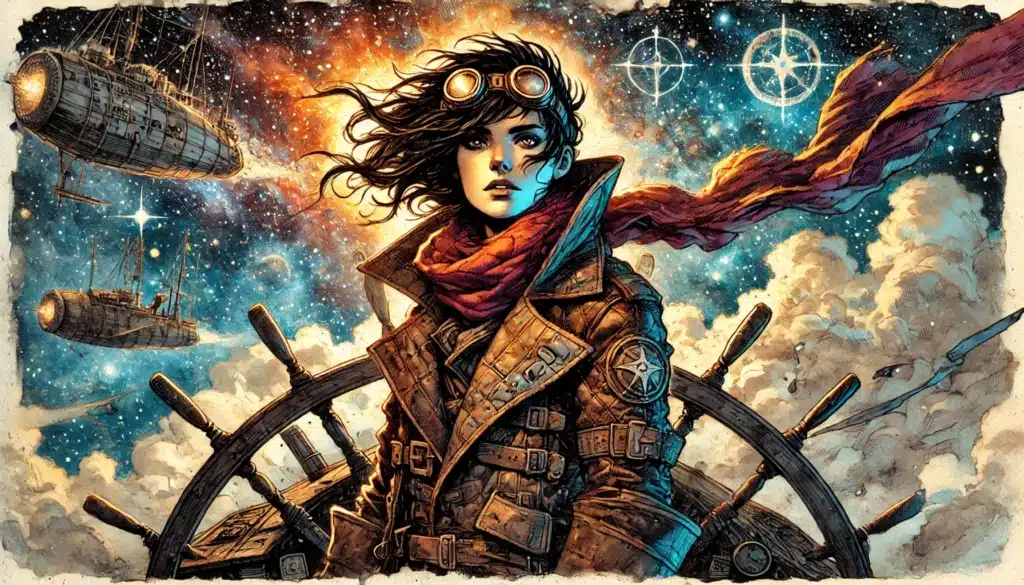
The Hourglass Abyss: A Dungeon-Centric Time World
In the Hourglass Abyss, stories are more than threads; they’re kaleidoscopic tapestries woven across the ages. As adventurers navigate through shifting timelines, they may encounter echoes of their own pasts and futures, experiencing déjà vu as a haunting reminder of decisions unmade. The very nature of identity is fluid here, as players might come face to face with versions of themselves from divergent realities, challenging their perceptions of self and destiny. Friendships can twist into rivalries in the blink of an eye, and the potential for betrayal looms with every passing moment; factions may shift allegiances as the dungeon’s whims dictate the flow of alliances. Explorers of the Abyss must harness the unique properties of time to forge their paths. Those brave enough may find themselves gleaning fragments of lost knowledge from abandoned timelines, but wielding such power is treacherous. The very act of changing the past can provoke disastrous consequences: inadvertently sparking wars, reviving ancient horrors, or awakening legendary figures. Time itself can become a weapon, where manipulating temporal currents might grant fleeting advantages or unleash catastrophic repercussions. Each corridor presents choices laden with uncertainty—what seems a trivial decision may reverberate across epochs, reshaping everything from friendships to entire civilizations. Resources become paradoxical in this realm of shifting realities. Traditional currencies may lose their value overnight, replaced by artifacts from timelines where fortunes were won or lost in a heartbeat. Knowledge becomes the most precious commodity, as those who can decipher the language of past and future gain an edge over their competitors. Navigating the convoluted politics of time-warped societies requires sharp wit and keen insight, as every character may harbor hidden agendas influenced by timelines yet to be unveiled. The intricacies of barter transform into elaborate schemes across eras, requiring adventurers to outsmart foes not just in the present, but with foresight for what could or should be. In this living, breathing dungeon, even the fabric of reality is subject to change. Creatures of pure time—chronovores and ticking guardians—guard the secrets nestled within the shifting walls, their motives as inscrutable as the primal forces of creation itself. To explore the Hourglass Abyss is to embrace chaos, and yet, it remains a testament to resilience; for within the whirl of paradox lies the potential for reinvention. Here, the adventurers’ choices ripple through time, inviting them to become architects of new legacies or prisoners of histories they cannot escape. Embrace the plunge into time’s undulating spiral and discover what stories await those audacious enough to challenge the rhythm of reality itself.
The Spiral of Time
Now, let’s tumble even further. Imagine a world not ruled by gods or geography, but by an endlessly shifting, sentient mega-dungeon—the Hourglass Abyss. This isn’t just a place, but a concept: a clockwork labyrinth that throbs in and out of temporal phase, its corridors leading not simply through space, but across timelines. All life in this world orbits the dungeon’s cycles. To exist is to reckon with time—sometimes waking to find your home exists centuries earlier or later than it did the night before.
The Hourglass Abyss is a paradox-ridden crucible, where past, present, and possible future bleed into one another. Its depths shift, rewriting themselves in feverish pulses: a room you saw yesterday might not exist tomorrow, or may have devolved into primeval chaos. The heart of the dungeon is the time-core, a reality anchor both worshipped and feared by all who survive in its strange gravity.
Civilizations have adapted to survive. Some are ancient, their traditions calcified, while others live in a state of permanent improvisation. Everyone, from the lowest scavenger to the highest priest-archivist, learns to hedge their bets between epochs—always seeking to anticipate the next great alignment, the next timequake, the next loop.
To play here is to let go of linearity. Cause and effect snarl, and every choice echoes forwards and backwards.
Epoch-Touched Civilizations
Society is defined by its relationship to the Hourglass Abyss’s moods and machinations. Some live in hope, awaiting the next alignment when their city will reappear in an “easier” timeline. Others worship the dungeon, treating random time-shifts as divine will. Still others seize opportunity—raiding the past for relics, or launching expeditions into the unreal future to steal forbidden knowledge.
Border skirmishes are measured in minutes, not miles. Revolutions erupt when the dungeon shifts, rewriting history overnight. Some civilizations are locked in recursive loops, doomed to repeat the same tragedies until an outside force breaks the cycle.
Timeline-Based Civilizations:
- Sandwalkers of the Near-Past
- Chrono-Seer Dynasties
- Mirrorfolk of the Unreal Future
- Noon-Dwelling Looptribes
- Paradox Herders
- The Forgotten of the Glitched Dawn
- Nightfall Preservers
- Hourglass Nomads (phase-drifters)
- The Lost of Last Tomorrow
- Sunless Antiquarians
- Cursed Dawnless Knights
- Recursive Cults of Future-Past
- Era-Gardener Artisans
- Eternal Youth Orders
- Moment-forgers (craftsmen using stilled time)
- Time-Fragment Outcastes
Chrono-Classes and Paradox Races
Here, character options become wonderfully warped. The Rift-Born Sorcerer draws power from unstable nexuses, casting spells that manipulate time: speeding allies, aging foes, or splitting themselves into echo-duplicates. The Paradox Warrior may have an ancient mind in a young body—or vice versa—remembering battles that never happened, or wielding weapons that “don’t exist yet.”
Temporal perception matters. Some races are born from causality glitches: “Futurefolk” who blink in and out of reality, “Loopborn” locked into repeating cycles, “Precedents” who remember your own future as ancestral ritual. Each comes with boons—and headaches—that tie inextricably to the wild narrative chaos of the Abyss.
Roleplay is as much about memory and expectation as the present moment—players become their own ancestors, double back to correct past mistakes, or unwittingly trigger a prophecy simply by surviving. Mortality means little; legacy means everything.
Dungeon as World
Every “dungeon crawl” is an act of worldbuilding. The Hourglass Abyss isn’t just a mega-dungeon; it’s the cosmos itself, an ecosystem rippling with time-anomalies. Corridors flood with “moment-wolves,” spiraling through echoes of failed parties or alternate histories. Entire levels may age or renew in an instant—youthful one session, ancient the next.
Politics are time-riddled. Factions rise to power by decoding dungeon cycles, securing “anchored” territory, or blackmailing rivals with glimpses of terrible futures. The dungeon is sentient, its mazes morphing to reward, punish, or simply confuse.
Every expedition risks losing one’s place in the timeline. A party might solve a problem in the past, only to discover it never existed in their present. Cause and effect are narrative putty—sessions loop back, ripple forward, or fracture into parallel realities.
Dungeon Table
| Dungeon Level Name | Time State | Major Anomaly/Threat |
|---|---|---|
| The Hourglass Core | Present | Sentient Time-Heart Rift |
| Mirror Maze of Yester | Past | Duplicating Memories |
| Tomorrow’s Labyrinth | Future | Unstable Prophecy Shards |
| Noon-Warp Halls | Loop | Repeating Guardian Constructs |
| Glitching Portals | Broken | Unstable Time-Doors |
| Shadowed Antiquities | Past | Forgotten Curseecho |
| Fluxgarden | Present | Temporal Growth Rifts |
| The Sundown Vault | Future | Aging Accelerant Mycelia |
| Recursive Bastions | Loop | Paradox Knights |
| Lost Nowhere Nests | All-States | Timeline Predators |
Campaigning Across Ages
The party’s quest might be as straightforward—or as impossibly convoluted—as stabilizing the time-core itself. Each step, every failed or completed quest, ripples forward and backward, threatening to rewrite player history. Victory may mean “remembering” a victory that never happened, or dooming entire civilizations to erasure.
Alternatively, a paradox titan—an avatar of timeline collapse—could be on the loose. Battling such a titan means fighting, not just for individual survival, but for the coherence of reality itself. Success may anchor the future, or lock the world in endless, recursive tragedy.
Prophecies walk with players here. Perhaps an ancient riddle threatens to become self-fulfilling, unless the party breaks the loop, forces new connections, or confronts themselves across centuries. Allies, enemies, and even dungeons themselves flicker in and out of sequence—every relationship is a puzzle.
The storytelling here is as fractured as it is brilliant. DMs are urged to embrace nonlinearity: let memory become resource, causality become battleground, and let the greatest weapon in the party’s arsenal be the will to shape their own history.
Outro
The Hourglass Abyss is as much puzzle as place. For both GMs and players, it offers the heady rush of causality and possibility: adventures that loop, twist, and fold back upon themselves, where memory and consequence become the core mechanics.
⚔️ Fantasy RPG Random Tables Books
Make life as a Gamemaster easier…
If you play Dungeons & Dragons, Pathfinder, or other fantasy RPGs, this
RPG random tables series
is packed with encounters, NPCs, treasure, and more. Available in eBook or print—either way, you’ll have a wealth of adventure ideas at your fingertips.
If your table is hungry for time-travel, metapuzzles, and schemes that reverberate across ages, this setting is your invitation to make causality the stuff of legend—and legend something you can finally rewrite.

The Hemocline: A World Beneath Blood
In the Hemocline, blood is more than a mere fluid; it is the lifeblood of existence itself, teeming with vigor and fraught with peril. Here, adventurers are not just travelers traversing an unknown landscape; they are intruders within a vast, sentient organism that judges them with every beat. In these labyrinthine tunnels, the very walls pulse with intention, capable of nurturing or annihilating those who dare to tread upon their sacred paths. To navigate the Hemocline is to engage in a delicate dance of diplomacy and survival, where understanding the rhythms of the world-blood may mean the difference between being embraced as allies or repelled as invaders. Societies in the Hemocline are woven from the fabric of life itself, fusing technology and biology into a seamless tapestry. From intricate organic architecture that blooms with life to ingenious devices that manipulate the flow of blood for myriad purposes, each civilization reflects its unique adaptation to the demands of their environment. Hematurgists wield the power of life-force, crafting deadly weapons or healing miracles from the very essence that sustains them. Yet, with such potential comes a risk—as the line between sustenance and destruction is perilously thin. The politics here are as vibrant and volatile as the flows they govern, with factions vying for control over vital resources, their alliances shifting like the currents of the body’s circulatory system. The inhabitants of the Hemocline include creatures unlike any other, born from the very sinews of the world. Some are anthropomorphic beings infused with the essence of blood, their abilities intertwined with the flows of their domain, while others take the forms of grotesque monstrosities adapted to the brutal challenges of subterranean life. Each encounter is a potential negotiation or conflict, as alliances form and fracture with the rapidity of a heartbeat. Here, the players’ understanding of life, identity, and power will be tested; their decisions might heal, corrupt, or forever alter the course of civilizations nestled within these living veins. Embrace the thrill of the unknown as your party plunges into the Hemocline’s depths, where every adventure is a testament to resilience, adaptation, and the evolutionary struggle for survival. As they grapple with the complexities of bio-civilizations, they will discover that their very existence hangs in a balance as delicate as the pulse of life itself. The Hemocline beckons, promising become both a quest for discovery and an exploration of what it means to be truly alive in a world where the body is everything and nothing all at once.
Subterranean Bio-Civilizations
Forget stone caverns and crystalline undercities. Journey beneath the earth’s crust, beyond the mere roots of trees, and descend into living tunnels—arteries, veins, heart-chambers, and capillary passageways. The Hemocline is not just underground, but within the body of the world itself: a living, pulsating realm where bio-civilizations nestle within organic networks, every corridor throbbing with vital potential.
Civilizations carve homes into vascular walls, anchor towns to pumping nodes, and worship the world’s great Heart as both machine and mother. Structures are grown as much as built—bioengineers and pulse-keepers keep the tissues flowing, balancing ecosystemic harmony with civil need.
To live in the Hemocline is to adapt to constant change. Bloodstreams flood or slow with the collective mood of the world. Wars mean rerouted flows, colonies rising within immune “lymph nodes,” or rebellious enclaves hacking their way through the digestive “gutwarrens” beneath the old bone-eclipsed thrones.
Life here is survival writ in red and white, as every settlement and route is living terrain—sometimes welcoming, sometimes lethally rejecting foreign bodies.
Bloodborne Powers
Magic is written in pulse and pattern. Hematurgists (blood-sorcerers) manipulate the flow—speeding circulation, sealing wounds, or directing coagulation to create weapons of living tissue. Fighters synchronize attacks with heartbeats, rogues vanish within a rushing tide of clotting cells.
Some sorcerers become world-shapers, others disease-bringers—bending the body’s defense to attack or heal, or rewriting the very marrow of reality. The cost is clear: every power drawn is a risk, for blood can turn against its wielder with feverish vengeance.
Others tap into cellular memory: knowledge encoded in cell-structure, learning entire histories by drinking or merging with vital fluids. The bravest even venture into “memory clots”—literal pools of congealed time, rich with lost events or futures never born.
The Flow War
The Hemocline is a field of constant strife. Artery empires—structured, disciplined, ever-pumping—vie for dominance, enforcing order in the name of the Heart. In response, lymph rebel colonies organize in hidden “marrow vaults” or immune sanctuaries, forming resilient communities able to vanish at the first hint of invasive patrol.
Other powers surge and fade: parasite cults that swim the digestive tract; leech-herd nomads riding the great blood-barges; ironcore guilds whose livelihoods depend on the ritual harvesting of vital nutrients.
Every conflict is intensely personal—the battleground is living tissue, and every victory, a change in the world-body’s overall health.
Notable Factions and Locations:
- Bone Marrow Monks
- Ironcore Guilds
- Leech-Herd Nomads
- Arterial Crown Enforcers
- Lymphatic Nightblades
- Clot Core Guardians
- Pulsepriest Orders
- Vein-Drifter Racers
- Gutwarren Parasite Cults
- Synaptic Navigators
- Redwall Fortress
- Spleengate Syndics
- Platelet Swarmers
- Heart Chamber Sovereigns
- Bile River Commerce Senate
- Neutrophil Dispensary Mages
- Hemoglobin Hunters
Hemodungeons
Descent into danger means crawling through literal organs. Dungeons within the Hemocline may be beating heart-crypts, nerve mazes, or bone-encrusted abattoirs, each realm home to antibody monsters, mutation fields, and evolutionary dead-ends.
Traps are biological—coagulating floods, parasite tears, fever blooms, or pulse-spikes that burst through the walls to sweep adventurers away. Bosses might be rogue viruses, ancient “memory thromboses,” or intelligent cancers hungry for new hosts.
Rewards, too, are viscera-rich: gene-seed elixirs, living armors, or cell-memory tomes that risk rewriting a hero’s entire history. Every delve is a negotiation of survival and risk: will you become a symbiont, or be expelled with lethal force?
Hemodungeon Table
| Dungeon Zone | Threat Type | Biome Function |
|---|---|---|
| Atrium Nexus | Pulse Trap Golems | Blood Distribution Hub |
| Leech Lagoon | Leech Swarm | Biofiltration |
| Corpuscle Vault | Platelet Barriers | Coagulation Center |
| Nerve Spiral | Shock Pulse Traps | Neural Relay |
| Spleen-Gate | Immune Guardians | Blood Recycling |
| Bile River Passage | Acidic Fungi | Metabolic Waste Removal |
| Marrow Crypt | Bone-Cross Berserkers | Cell Production |
| Hemogorge | Vascular Collapse | Nutrient Exchange |
| Valve Depths | Crushing Flow | Blood Pressure Gateway |
| Lymph Node Catacomb | Viral Pack Ambush | Immunity Defense |
| Gallbladder Cache | Toxic Ooze Golems | Toxin Storage |
| Colon Coil | Parasite Swarms | Microbial Filtration |
Campaign Arteries
Adventure arcs here can be intimate or epochal. Perhaps the party must save the world-heart from infection—fighting through fever dreams, hallucinations, and antibody armies to reach the pulsating core. Or maybe they must expel a mad blood god, one who threatens to rewrite the Hemocline’s very laws with every sampled drop.
Other stories demand navigation and negotiation: crossing from empires to rebel lymph colonies, forging alliances or engineering diplomatic “infusions” to restore the health of the whole. Or, the party might seek the legendary Clot Core—a hidden confluence of all vital forces, said to grant ultimate healing (or the power to hemoforge entire armies).
⚔️ Fantasy RPG Random Tables Books
Make life as a Gamemaster easier…
If you play Dungeons & Dragons, Pathfinder, or other fantasy RPGs, this
RPG random tables series
is packed with encounters, NPCs, treasure, and more. Available in eBook or print—either way, you’ll have a wealth of adventure ideas at your fingertips.
As always, victory is double-edged. Every act of purification risks harming the world-body, even as it offers hope of survival. Every form of corruption has roots somewhere in the living tissue—no threat is ever truly exterminated, only transformed.
Outro
The Hemocline is a carnival of the grotesque—imaginative, nightmarish, and poetic. It is worldbuilding at its most visceral, where hope and horror are inseparable, and every campaign is a story of infection, survival, and renewal.
This is a setting where literal transformation stands in for psychological change, and where saving the world means learning to thrive within the body of something stranger, older, and more vital than fantasy has ever dared to imagine.
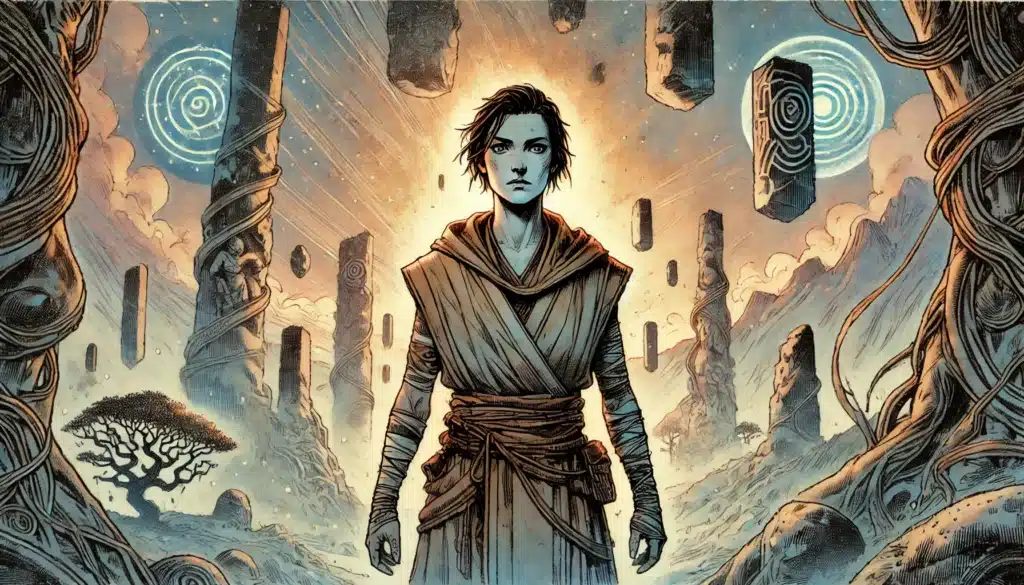
Final Thoughts: The Value of the Unknown
These worlds do far more than provide novelty for your campaign. They are exercises in imagination, invitations to break the mold, and challenges meant to force both GMs and players to think differently about what defines an adventure, a hero, or a setting. Dropping your party into one of these unknown realms doesn’t just change the flavor of your table—it prompts new modes of storytelling, new mechanics, and new stakes. You aren’t just swapping scenery; you’re overhauling the engines of play.
The beauty of the unknown isn’t its obscurity, but its ability to unlock true creativity. When no one—GM or player—knows the answer, every choice matters more. These five settings are designed to be mixed, matched, adapted, or cherry-picked: take an idea, twist it, and give it a home at your table. They’re meant to be lived in, argued over, and changed through play.
Don’t be afraid to remix. Splice floating shards into the blood-veined tunnels of the Hemocline, or let the Cacophonic Realms’ sound-magic infect your time-warped mega-dungeon. If a sentient city or mutated druid jumps out at you, make it yours. True originality doesn’t come from inventing rules from scratch—it comes from daring to move past what you already know and love.
Remember, the reward for exploring territory no module or supplement has mapped is a campaign that belongs to you and your table alone. The moments of real surprise, the hard-won triumphs and desperate bargains—these all grow best in the bright, untamed soil of the unfamiliar.
So next time you sit down to prep, consider: what if the world itself felt new? Not just for your players, but for you? The unknown isn’t just a blank space—it’s a fire, crackling, beckoning you to build, break, and rebuild. Wherever you land—skyborne, root-bound, echo-laden, time-twisted, or blood-deep—know that the best stories begin when you dare to dream beyond the map.

